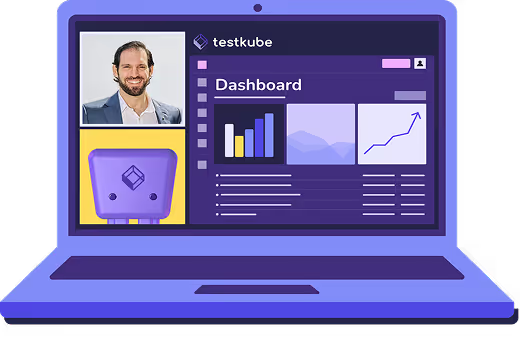Table of Contents
What Does CI/CD Integration Mean?
In modern DevOps workflows, continuous integration and continuous delivery (CI/CD) pipelines automate the entire lifecycle of building, testing, and deploying applications to production environments. By integrating comprehensive testing strategies into these automated pipelines, development teams ensure that no untested or potentially broken code progresses through the software delivery lifecycle, while simultaneously providing developers with immediate, actionable feedback on their code changes.
CI/CD integration creates a robust framework that supports testing at multiple critical stages throughout the development and deployment process:
- Pre-commit hooks – Lightweight, fast-running tests that execute locally before code is even pushed to the repository, catching obvious errors early and reducing the burden on CI/CD infrastructure
- Build-time testing – Comprehensive validation of unit tests and integration tests that verify individual components and their interactions, ensuring code quality standards are maintained with every build
- Deployment validation – Critical checks that ensure services, configurations, and dependencies deploy correctly in staging or production environments, preventing deployment failures and service disruptions
- Post-deployment monitoring – Ongoing validation of system reliability through smoke tests, health checks, and synthetic monitoring that confirms the application functions correctly after deployment
Modern CI/CD testing integration includes several key features that enhance efficiency and developer experience:
- Automated triggers that initiate test suites based on specific events such as code commits, pull requests, merge events, scheduled intervals, and deployment activities
- Parallel execution capabilities that distribute tests across multiple runners or containers simultaneously, dramatically reducing overall pipeline duration and accelerating feedback cycles
- Intelligent test selection algorithms that analyze code changes and dependencies to run only the tests affected by recent modifications, optimizing resource usage without sacrificing coverage
- Centralized dashboards and real-time notifications that provide complete visibility into test results, failure patterns, performance metrics, and pipeline status across all teams and projects
- Artifact management that stores test reports, logs, screenshots, and performance metrics for historical analysis, debugging, and compliance documentation
Advanced CI/CD integrations also enable sophisticated deployment strategies including canary releases (gradual traffic shifting to new versions), blue-green deployments (zero-downtime switching between environments), A/B testing, and feature flag testing that allow teams to validate changes with subsets of users before full rollout.
Why CI/CD Integration Matters
CI/CD integration has become a critical component of modern software development because it delivers substantial benefits across the entire development lifecycle:
- Provides rapid feedback loops to developers by delivering test results within minutes of committing code, enabling immediate fixes when issues are still fresh in developers' minds and reducing the cost of bug resolution
- Prevents regressions from slipping into production through automated test suites that act as safety nets, catching breaking changes, compatibility issues, and performance degradations before they impact end users
- Reduces manual effort by automating validation, eliminating repetitive manual testing tasks and freeing QA teams to focus on exploratory testing, test strategy, and complex scenarios that require human judgment
- Supports faster, more reliable release cycles by giving organizations confidence to ship code multiple times per day, knowing that automated validation catches issues and enables true continuous delivery with faster time-to-market
- Improves code quality and maintainability through consistent, automated testing standards that create a culture of quality and encourage developers to write more testable, modular code
- Enables compliance and auditability by creating detailed audit trails of validation activities through automated test execution, supporting regulatory requirements and quality certifications
However, implementing effective CI/CD integration also presents several challenges that teams must address:
- Managing pipeline complexity as test suites grow and multiple environments require coordination
- Stabilizing test environments to eliminate flaky tests and infrastructure-related failures that erode confidence in results
- Balancing comprehensive test coverage with execution speed to maintain rapid feedback without creating bottlenecks
- Resource optimization to manage the infrastructure costs of running extensive test suites
- Test data management across multiple environments and test scenarios
- Cross-team coordination when tests span multiple services, APIs, and dependencies
Real-World CI/CD Integration Examples
Example 1: GitHub Actions with Kubernetes Testing
A development team using GitHub Actions establishes sophisticated workflows where every pull request automatically triggers Testkube to execute comprehensive Cypress end-to-end tests and API validation tests inside a staging Kubernetes cluster that mirrors production configuration. The tests validate UI functionality, API contract compliance, database interactions, and cross-service communication before any code merges to the main branch, ensuring that integration issues are caught during code review rather than after deployment.
Example 2: Microservices Platform Testing
A microservices platform with dozens of interconnected services implements multi-stage CI/CD integration that includes contract testing (validating API agreements between services), integration testing (verifying service interactions), end-to-end validation (testing complete user workflows), and performance testing (ensuring response times meet SLAs). The pipeline orchestrates these tests across service dependencies, running independent tests in parallel while sequencing dependent validations appropriately, reducing overall pipeline time from hours to minutes.
Example 3: Mobile App Continuous Testing
A mobile application team integrates automated UI testing, accessibility validation, and device compatibility testing into their GitLab CI pipelines. Every commit triggers parallel test execution across iOS and Android simulators, with critical user journeys validated before app store submission, reducing manual QA cycles from days to hours.
How CI/CD Integration Works with Testkube
Testkube makes CI/CD integration seamless and powerful by providing native Kubernetes-based test orchestration that eliminates the complexity of traditional testing infrastructure:
- Running tests directly inside Kubernetes clusters from CI/CD jobs, ensuring tests execute in environments that match production configurations with identical networking, storage, and resource constraints
- Supporting integrations with leading CI/CD platforms including GitHub Actions, GitLab CI, Jenkins, CircleCI, ArgoCD, Flux, TeamCity, and custom webhooks, enabling teams to use their preferred tools without vendor lock-in
- Automating diverse testing workflows including regression testing, end-to-end validation, performance and load testing, API testing, security scanning, and compliance checks, all orchestrated from a single platform
- Storing comprehensive results and artifacts for trend analysis, failure debugging, compliance reporting, and performance benchmarking across releases and environments
- Providing declarative test definitions using Custom Resource Definitions (CRDs) that enable GitOps workflows and infrastructure-as-code practices for test management
- Scaling test execution dynamically based on pipeline demands, leveraging Kubernetes' native orchestration to optimize resource utilization and minimize costs
- Offering centralized visibility through dashboards and APIs that aggregate test results across teams, projects, and environments for enterprise-wide quality insights
With Testkube's cloud-native architecture, teams achieve faster pipeline execution, better resource efficiency, improved test reliability, and seamless integration with existing DevOps toolchains, all while maintaining the flexibility to test any application type with any testing framework.





